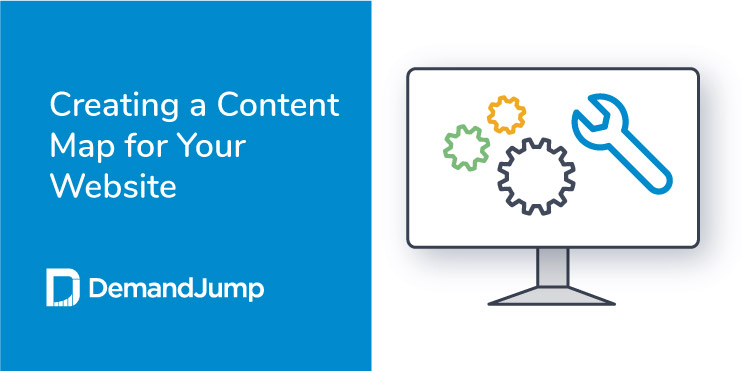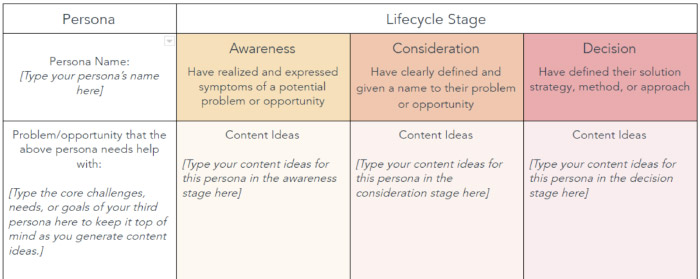How to Create a Content Map for Your Website
November 18, 2021 •DJ Team

Modern-day content marketing is much more than publishing articles and blog posts targeting high-traffic keywords.
Brands that excel at content marketing tailor their content to the precise needs of their audience at the right stage in the buyer's journey. This allows them to build authority and persuade readers to convert into subscribers, leads, and customers.
How do you create personalized website and blog content? Content mapping is the answer.
In this article, we'll discuss content maps and how they can help you create a results-driven content strategy.
Let's get started.
What Is a Content Map?
A content map is a plan document that allows you to create the right content for the right audience at the right time. It helps you segment your audience based on its needs and stage in the buyer's journey.
You can create a content map in a regular spreadsheet by listing the different buyer's journey stages in one column and mapping them with relevant content ideas and topics.
How does a content map improve your content marketing strategy?
It allows you to organize your content strategy by connecting your content with the audience that needs it the most. As a result, your content becomes more persuasive and drives more action in the form of leads and customers.

Customer Journey Mapping Examples
A customer journey map helps you visualize the various paths your customers follow to reach their purchase decisions. It allows you to better understand the reasons behind your customers' decisions and helps you create personalized experiences to answer their questions and remove the bottlenecks in their path to purchasing your product.
When creating a customer journey map, you need to explicitly ask your audience how and why they found your product. This tells you a lot about their goals and intentions, based on which you can create better solutions for them.
For example, a prospect who finds you through a brand mention on a high-authority blog will have a significantly different customer journey than someone who clicks your Facebook ad to sign up for your list.
A customer journey map helps you chalk out all these scenarios and prepare personalized content in advance.
Two Factors to Consider When Mapping Websites
When mapping websites, you need to consider two crucial factors.
1. Buyer Persona
A buyer persona is a fictitious or hypothetical profile of your ideal customer. It helps you define the person your marketing strategy should target. It lists your typical buyer's gender, income, geographic location, interests, hobbies, brand affiliations, problems, tendencies, needs, wants, fears, and desires.
Accurate buyer personas help you create more personalized content maps.
2. Lifecycle Stages
A typical buyer goes through three lifecycle stages before purchasing or declining your product.
- Awareness: In this stage, your prospect (or persona) realizes they have a problem to solve or an opportunity to grasp.
- Consideration: In this stage, your prospect has an advanced understanding of the problem/opportunity and explores various solutions.
- Decision: In this stage, your prospect has identified multiple solutions and is evaluating the best fit to purchase.
Content Mapping Tools
You can create a content map using Google Sheets or an Excel spreadsheet. You don't need complex tools or technology to draft a content map. The important thing is to list the various needs of your customers and match them with the relevant customer journey stages. However, if you find spreadsheets boring, you can also use mind mapping tools to create content maps.
Content Mapping Example Template
There's no fixed content map template, and you're free to create a format that works for you. However, to make your job easier, we'll share a content map example template that you can use or modify as you see fit.
- List your buyer persona in the first column.
- Mention the three buyer journey stages (Awareness, Consideration, Decision) in the following three columns.
- Under the persona column, define the core problem of your customer and their primary goal or motivation for using your product.
- Under each buyer journey stage, list relevant content ideas that answer your audience's questions in that stage.
This is what your content map template should look like.
What Is Website Content Mapping?
Website content mapping is the process of crafting the right website content ideas based on your customer's journey stage.
A website content map helps you determine:
- The pages you need on your site
- The content ideas you should work on
- The landing pages on your site
- The content on your homepage and feature pages
- The structure of your homepage
Creating a website content map allows you to understand the questions of your ideal visitor and helps you craft the right content to answer them. This has a direct impact on your site's conversion rate and ROI.
Website Content Examples
Based on your website's content map, you can find different content ideas for your blog and product pages.
For example, you can create:
- Dedicated pages for product features
- Find content ideas for each feature based on the questions of your audience
- Find lead magnets and landing page ideas to convert traffic into subscribers
- Use various content formats. such as how-tos, tutorials, listicles, and case studies, for your website.
Are You Ready to Create a Content Map for Your Website?
Content mapping is a crucial step in developing a cohesive content marketing strategy. But it's not as complex as some people think. If you can segment your audience based on their needs and buyer journey stage, it becomes easier to connect them with relevant content ideas that answer their questions.
Get started today creating content that ranks.
Featured Articles
Categories
- Attribution Tracking (13)
- Channel Optimization (11)
- Consumer Insights (68)
- Content Marketing (251)
- Data Science (8)
- Digital Marketing (6)
- Digital Transformation (26)
- Enterprise (10)
- Lead Generation (14)
- Market Intelligence (8)
- Marketing Analytics (39)
- Marketing Attribution (57)
- Marketing Management (153)
- Marketing Operations (86)
- Organic Search (222)
- Paid Search (52)
- Pillar-Based Marketing (63)
- Programmatic Advertising (9)
- SaaS Content (14)
- SaaS Marketing (29)
- Search Marketing (111)
- SEO Keyword Research (28)
- SEO Pillar (18)
- SEO Strategy (46)
- SMB (5)
- Website Content (12)



